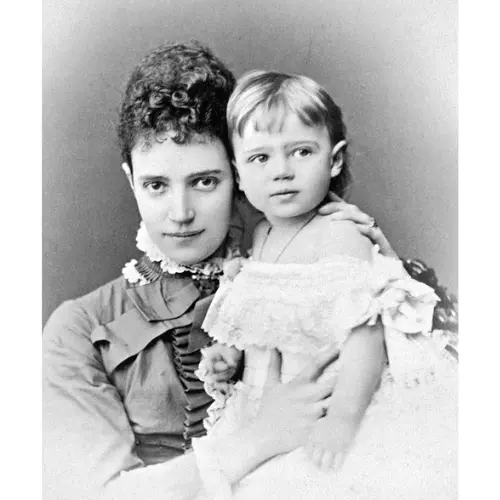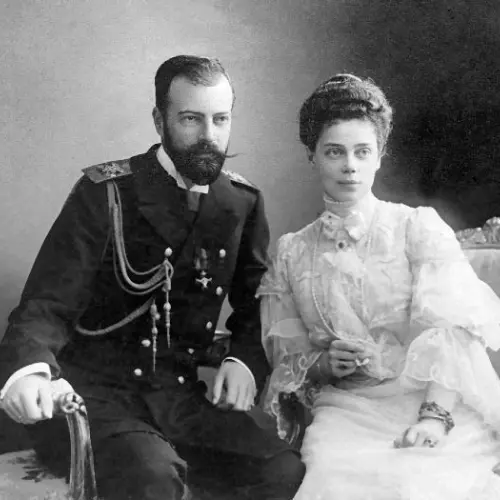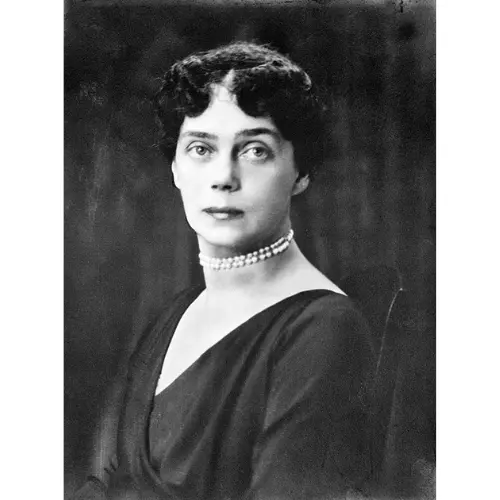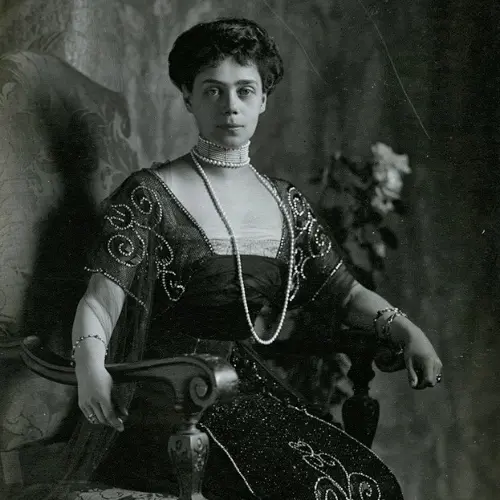In the annals of Russian history, the Romanov dynasty holds a special place, and among its illustrious members, Grand Duchess Xenia Alexandrovna stands out as a captivating and enigmatic figure. Born on April 6, 1875, Xenia Alexandrovna was the elder sister of Tsar Nicholas II, the last reigning monarch of Russia. Her life, marked by the grandeur of imperial courts, political upheavals, and personal tragedies, unveils a complex narrative that mirrors the tumultuous times in which she lived.
Early Life and Royal Upbringing:

Xenia Alexandrovna was the daughter of Tsar Alexander III and Tsarina Maria Feodorovna, formerly known as Princess Dagmar of Denmark. Growing up in the opulent surroundings of the Gatchina and Tsarskoye Selo palaces, she experienced a childhood surrounded by luxury and tradition. The Romanovs were a close-knit family, and Xenia shared a special bond with her siblings, particularly with her brother Nicholas, who would later become the last Tsar of Russia.
Xenia's education reflected the conservative values of the time, emphasising literature, languages, and the arts. She displayed a keen interest in history and culture, becoming fluent in multiple languages and demonstrating a talent for painting. Her education was not just academic; it also encompassed the responsibilities that came with her royal lineage. Xenia's upbringing prepared her for a life of public service and adherence to the expectations placed upon a member of the imperial family.
Marriage to Grand Duke Alexander Mikhailovich:

In 1894, as the 19th-century drew to a close, Xenia's life took a significant turn with her marriage to Grand Duke Alexander Mikhailovich, a union arranged by her parents. Grand Duke Alexander, known as "Sandro" within the family, was a cousin, and their marriage was seen as a strategic alliance within the royal circles. Despite the arranged nature of their union, Xenia and Alexander developed a deep and enduring love for each other.
Grand Duke Alexander Mikhailovich, an intellectual and a patron of the arts, shared many interests with Xenia. Their marriage was a happy one, marked by mutual respect and affection. The couple settled in a luxurious estate, Anichkov Palace in St. Petersburg, where they created a haven for the arts and culture, hosting intellectuals, artists, and musicians. Xenia, with her refined taste and appreciation for beauty, played a crucial role in shaping the cultural atmosphere of their residence.
Family Life and Parenthood:
Xenia and Alexander's marriage flourished with the birth of their seven children: Irina, Andrei, Feodor, Nikita, Dmitri, Rostislav, and Vasili. The couple embraced parenthood with devotion, and their home became a hub of familial warmth and intellectual stimulation. Xenia, in particular, was a hands-on mother, involved in the upbringing and education of her children.
Despite the idyllic family life, the couple faced challenges, including the discovery of Grand Duke Alexander's homosexuality. This revelation strained their relationship but did not diminish the deep emotional connection they shared. The Romanovs were known for maintaining appearances, and the couple continued to present a united front, shielding their private struggles from the public eye.
World War I and Revolution:
As World War I unfolded, the Romanov dynasty faced unprecedented challenges. The war placed an immense strain on Russia's resources, leading to social unrest and discontent among the populace. The monarchy, already facing criticism for its autocratic rule, became a target for revolutionary fervour.
The Russian Revolution of 1917 marked the end of centuries of imperial rule. Tsar Nicholas II abdicated the throne in March, ending the Romanov dynasty's reign. The subsequent months brought a series of tragic events that forever altered the course of history.
Exile and Tragedies:

In the aftermath of the revolution, the Romanov family found themselves in a precarious situation. The Bolsheviks, who seized power, were determined to eradicate any remnants of the old regime. Xenia, along with her husband and children, experienced the harsh realities of exile. Forced to leave their ancestral homeland, they embarked on a journey that would take them through Europe, seeking refuge in various countries.
The family faced financial hardships, and the once-grand life they had known was reduced to mere memories. Xenia, resilient and determined, tried to provide stability for her children in the face of uncertainty. However, tragedy struck when her husband, Grand Duke Alexander, succumbed to illness in 1933, leaving Xenia a widow.
The impact of the revolution reverberated through the family, and Xenia experienced further heartbreak with the loss of her son Andrei, who died in a plane crash in 1956. The once vibrant and influential Romanov family was scattered and diminished, forever altered by the tides of revolution and war.
Legacy and Remembering Grand Duchess Xenia Alexandrovna:

Grand Duchess Xenia Alexandrovna's life encapsulates the rise and fall of imperial Russia, the sweeping changes of the 20th century, and the enduring strength of the Romanov family. Her contributions to the cultural scene, her resilience in the face of adversity, and the enduring love she shared with her family paint a poignant portrait of a woman caught in the tumultuous currents of history.
In the modern era, interest in the Romanovs and their story remains strong. Xenia's life has inspired numerous books, documentaries, and adaptations, ensuring that her legacy endures. The Romanovs, once the rulers of an empire, are remembered not only for their political influence but also for the human stories that unfolded within the gilded halls of their palaces.
Cultural Patronage and Philanthropy

Xenia's passion for the arts and culture persisted even in exile. Despite financial constraints, she continued to patronise artists, musicians, and intellectuals. Her modest residences became hubs of cultural activity, fostering an atmosphere reminiscent of the grand salons of imperial Russia. Xenia's support for the arts not only contributed to the preservation of Russian culture but also provided solace and purpose during difficult times.
Additionally, Xenia was actively involved in philanthropy, championing various causes to alleviate the suffering of fellow Russian émigrés. Her charitable efforts aimed to create a sense of community among those who had been displaced by the revolution. Xenia's commitment to philanthropy showcased her compassionate nature and her desire to make a positive impact, even in the face of personal adversity.
Grand Duchess Xenia Alexandrovna's life is a narrative of strength, adaptability, and devotion to family and heritage. From the splendours of imperial palaces to the trials of exile, she faced each chapter of her life with grace and resilience. Her story serves as a reminder of the human dimensions behind historical events, highlighting the enduring impact of individuals caught in the currents of change.
As we delve into the complex tapestry of Russian history, Grand Duchess Xenia Alexandrovna's legacy invites us to reflect on the enduring power of familial bonds, the importance of cultural preservation, and the strength that can be found in the face of adversity. In remembering her, we honour not just a royal figure but a woman who lived through an extraordinary era, leaving an indelible imprint on the pages of history.
YOU MAY ALSO LIKE:
GRAND DUCHESS MARIA ALEXANDROVNA OF RUSSIA
EMPRESS MARIA FEODOROVNA FESTOON SAPPHIRE NECKLACE
THE REGAL ELEGANCE OF MARIA ALEXANDROVNAS FRINGE TIARA: A HISTORICAL MASTERPIECE







